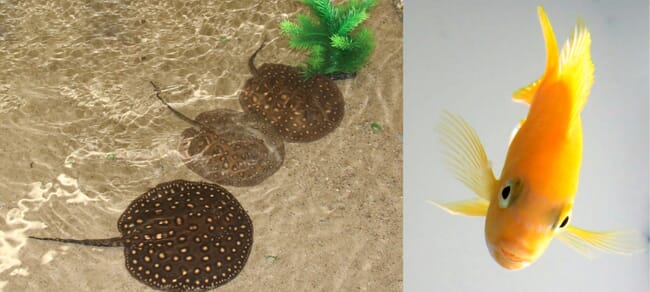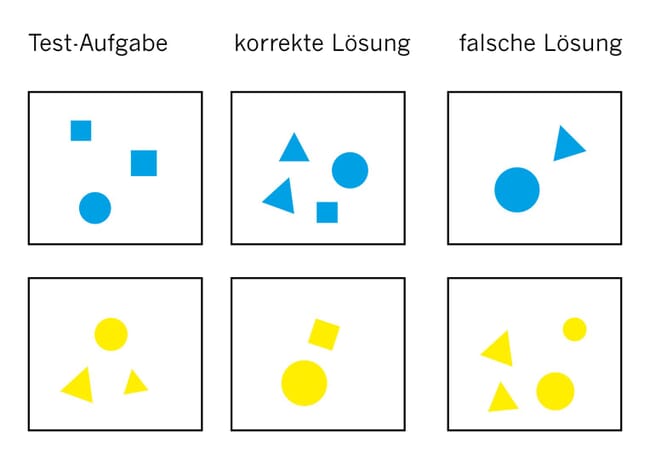
A recent study published in Scientific reports shows that cichlids and rays can perform simple arithmetic – but researchers do not know what the animals need these mathematical abilities for.
Suppose there are some coins on the table in front of you. If the number is small, you can tell right away exactly how many there are. You don't even have to count them – a single glance is enough. Cichlids and stingrays are astonishingly similar to humans in this respect: they can detect small quantities precisely – and presumably without counting. For example, they can be trained to reliably distinguish quantities of three from quantities of four.
This fact has been known for some time. However, the research group led by Dr Vera Schluessel from the Institute of Zoology at the University of Bonn has now shown that both species can even calculate.
"We trained the animals to perform simple additions and subtractions," Schluessel explains. "In doing so, they had to increase or decrease an initial value by one."
Blue means "add one," yellow means "subtract one"
But how do you ask a cichlid for the result of "2+1" or "5-1"? The researchers used a method that other research groups had already successfully used to test the mathematical abilities of bees: They showed the fish a collection of geometric shapes – in this case, four squares. If these objects were coloured blue, this meant "add one" for the following discrimination. Yellow, on the other hand, meant "subtract one."
After showing the original stimulus (four squares), the animals were shown two new pictures – one with five and one with three squares. If they swam to the correct picture (ie to the five squares in the "blue" arithmetic task), they were rewarded with food. If they gave the wrong answer, they went away empty-handed. Over time, they learned to associate the blue colour with an increase of one in the amount shown at the beginning, and the yellow number with a decrease.

© Esther Schmidt
But can the fish apply this knowledge to new tasks? Had they actually internalised the mathematical rule behind the colours? "To check this, we deliberately omitted some calculations during training," Schluessel explains. "Namely, 3+1 and 3-1. After the learning phase, the animals got to see these two tasks for the first time. But even in those tests, they significantly often chose the correct answer."
This was true even when they had to decide between choosing four or five objects after being shown a blue 3 – that is, two outcomes that were both greater than the initial value. In this case, the fish chose four over five, indicating they had not learned the rule “chose the largest (or smallest) amount presented” but the rule “always add or subtract one”.
Computing without a cerebral cortex
This achievement surprised the researchers themselves – especially since the tasks were even more difficult in reality than just described. The fish were not shown objects of the same shape (eg four squares), but a combination of different shapes. A "four", for example, could be represented by a small and a larger circle, a square and a triangle, whereas in another calculation it could be represented by three triangles of different sizes and a square.
"So the animals had to recognise the number of objects depicted and at the same time infer the calculation rule from their colour," Schluessel says. "They had to keep both in working memory when the original picture was exchanged for the two result pictures. And they had to decide on the correct result afterwards. Overall, it's a feat that requires complex thinking skills."
This is a surprising discovery because fish don't have a neocortex – the part of the brain also known as the "cerebral cortex" that's responsible for complex cognitive tasks in mammals. Moreover, neither species of fish is known to require particularly good numerical abilities in the wild. Other species might pay attention to the strip count of their sexual partners or the amount of eggs in their clutches. "However, this is not known from stingrays and cichlids," emphasises the zoology professor.




